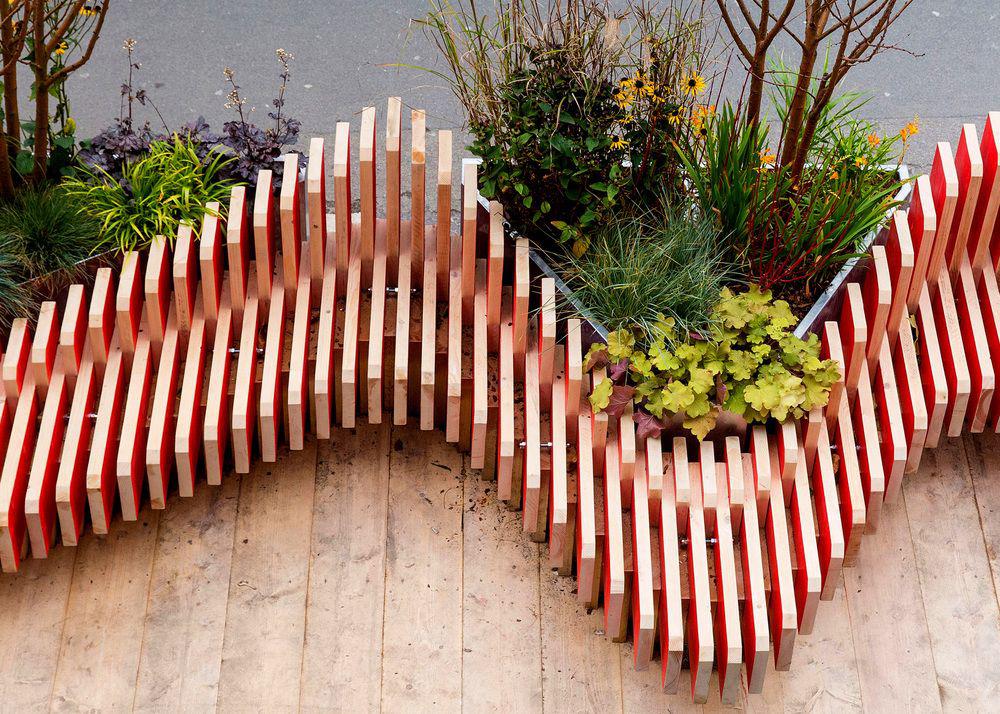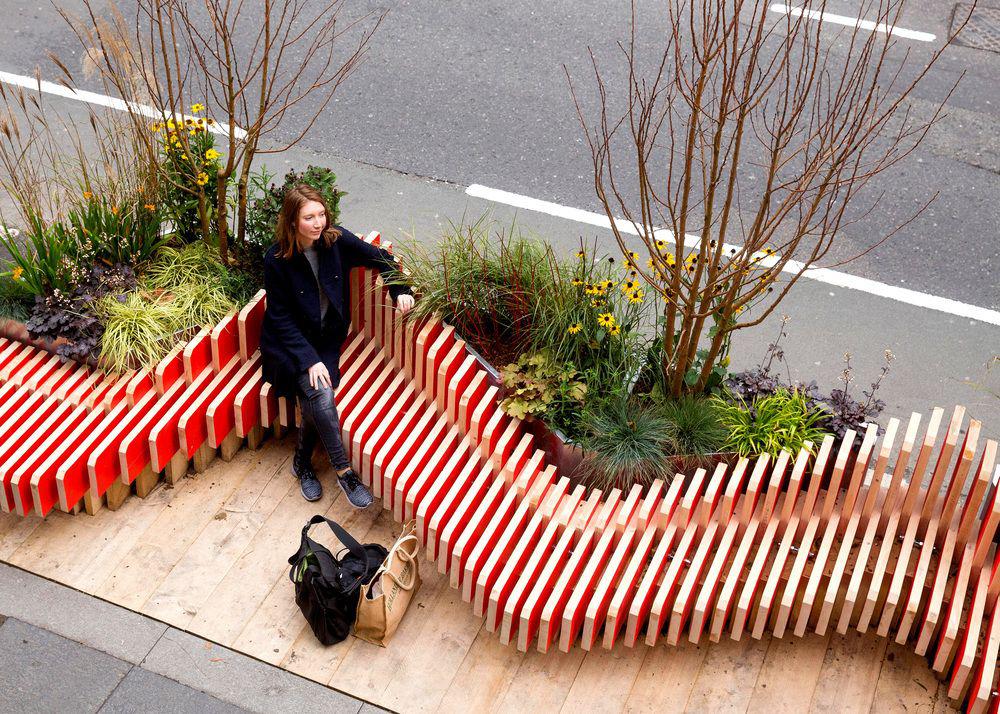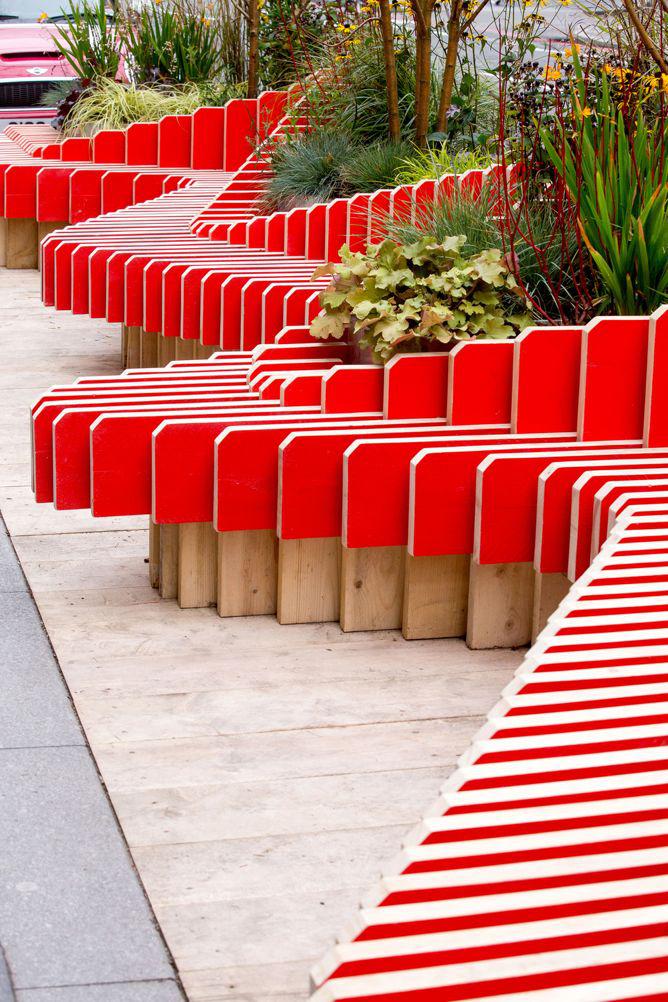In recent years, cities around the world have begun to embrace the parklet—a miniature rest stop for pedestrians that extends public space from the sidewalk by sacrificing one or more parking spaces—as a way to improve urban life. While these urban interventions, often quickly installed and dismantled, can transform cities on the sidewalk level, they can be a little slipshod in their design. But ParkedBench by WMB Studio, a new parklet on Tooley Street in the London Bridge area of London, is a cheerful, strikingly designed piece of urban sculpture.

Courtesy of WMB Studio
London might be known for its abundant urban parks, but that doesn’t mean that its gray, bustling streets can’t benefit from a little urban greening. ParkedBench is a portable micropark that offers public seating, a touch of plant life, and an air quality monitor that provides real-time data.

Courtesy of WMB Studio
The Liverpool- and London-based designers write in a project description that they wanted to create “a singular sculptural seating element around which zones of planting and small pockets of public space could occur and overlap, encouraging passers-by to stop and gather.” The mixed seating and planting provide a buffer zone from traffic using low-cost, off-the-shelf materials, with the bench and base constructed entirely from standard scaffolding boards.

Courtesy of WMB Studio
The parklet is the first winning design for the Team London Bridge Fresh Air Squares initiative, supported by the Transport for London Future Streets Incubator fund devoted to improving London streets.

Courtesy of WMB Studio
“The popularity of the piece has made it apparent that there is a real desire for more public seating and greening within central London,” WMB Studio co-founder Ed Butler told me in an email, “and that this initiative, as well as making an immediate urban contribution, will hopefully become a catalyst for future interventions.”

Courtesy of Mickey Lee/thebiglondon.com
Butler said the parklet is a temporary installation that is scheduled to be in place for up to a year. It’s also the prototype for a number of future parklets planned for the London Bridge area, located in central London close to London City Hall, in 2016. Future installations will include the same modular benches and planters adapted to individual sites, and Butler said he and his colleagues are keen to explore the use of lighting “to emphasize the sculptural qualities” of the parklet design.

Courtesy of WMB Studio
“People have used the parklet creatively, as we hoped they would,” Butler said, “with the niches becoming popular gathering places. Children especially have shown how important the tactile nature of both the bench and the planting is, many using it as a landscape to be climbed on and explored.”

Courtesy of WMB Studio
